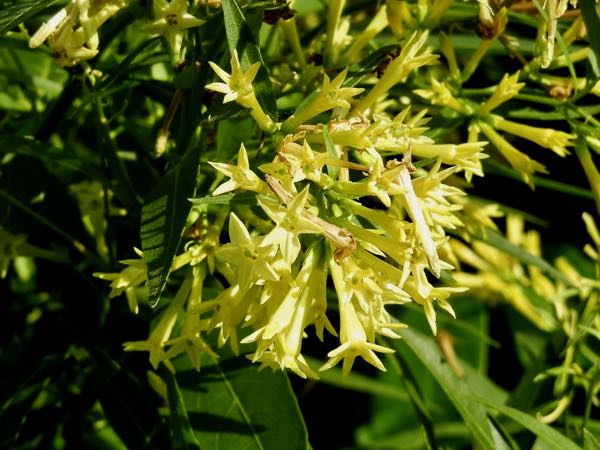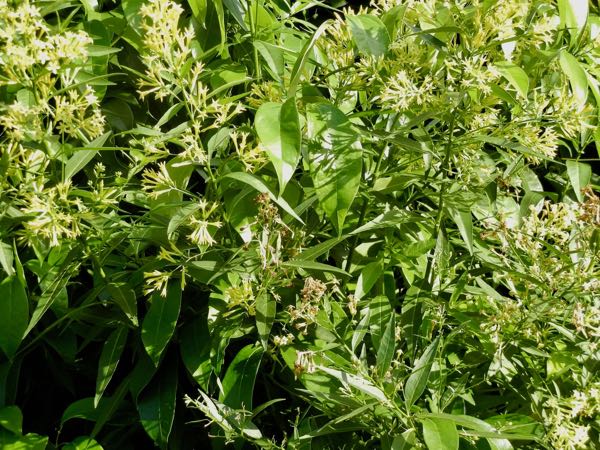Cestrum nocturnum, commonly known as Lady of the Night, Night-blooming Jessamine, Night-scented Jessamine, Night-scented Cestrum, Roatrani, or Poisonberry, belongs to the Solanaceae family of plants, also known as the potato family. This captivating plant is native to the West Indies and is characterized by its woody evergreen shrub form, reaching heights of approximately 4 meters or 13 feet.
The foliage of Cestrum nocturnum is dark green, glossy, and composed of simple, narrowly lanceolate leaves. These leaves provide an elegant backdrop for the main attraction of the plant—the flowers. The flowers of Cestrum nocturnum are typically greenish-white or yellow in color and grow in clusters. Their enchanting fragrance is particularly notable during the nighttime, filling the air with a sweet and intoxicating aroma. Following the flowering period, the plant produces dark-colored fruits that add further visual interest.
While Cestrum nocturnum is a remarkable addition to any garden, it is important to be aware of its toxic nature. The plant contains solanine, an alkaloid toxin. The fragrance emitted by the flowers can also cause respiratory issues, especially for individuals with asthma problems. Therefore, caution should be exercised when handling or growing this plant, and it is advisable to keep it out of reach of children and pets.

How to grow Cestrum nocturnum:
When cultivating Cestrum nocturnum, it is best to provide it with a sunny or partially shaded location. The plant thrives in humus-rich, fertile soil that is moist but well-drained. During the establishment period, regular watering is necessary to ensure proper root development. Providing some shelter from strong sunlight and protecting the plant from wide temperature fluctuations will contribute to its overall health and vitality.
Propagation of Cestrum nocturnum can be achieved through cuttings. Taking stem cuttings from mature plants and placing them in a suitable rooting medium will enable the growth of new plants.
It is crucial to note that the berries produced by Cestrum nocturnum are poisonous to humans and animals. However, birds are not affected by their toxicity and may consume the berries without harm.
In terms of maintenance, Cestrum nocturnum is generally disease-free and pest-free. Pruning the plant after the flowering period has concluded can help maintain its shape and encourage healthy growth for the following season.
While the captivating fragrance and elegant appearance of Cestrum nocturnum make it a desirable addition to gardens, it is essential to exercise caution due to its toxic properties. With proper care and awareness, this enchanting shrub can bring a touch of nocturnal beauty to outdoor spaces.




